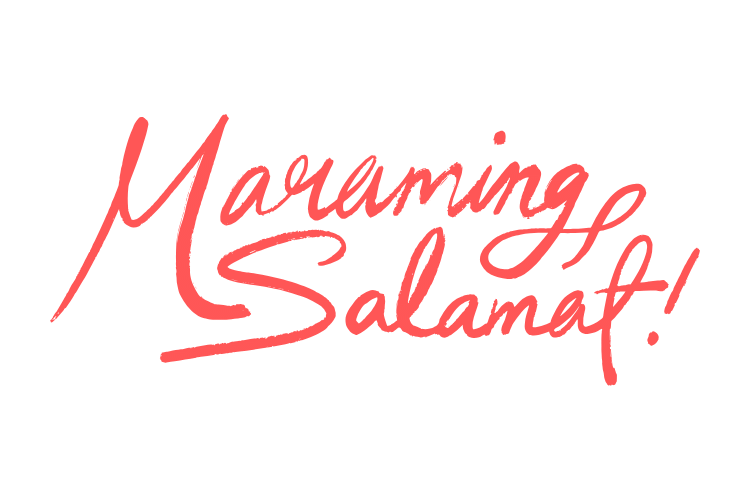Learn Tagalog
The Filipino Language

Tagalog is the national language of the Philippines and was declared the official language in 1897. Alongside Visayas, it is most spoken language in the country.
The majority of the people using Tagalog as their first language are typically in the northern part of the Philippines. While the rest mainly uses their own language such as in Ilo-ilo Ilongo, in Cebu and Mindanao Visayas, or in Zamboanga you may hear people talking in Chavacano (a Spanish derived language).
But also in the northern part of Luzon you can find many Filipinos using their own language such as Ilocano in Ilocos. As you can see, the Philippines has many languages but Tagalog has been declared as their main language to unite and which is thaught at school.
If you will spend most of the time in the mid or southern part of the country you may want to learn the Visayas language too, because it is more common and the first language to speak by the people.
It is always good to know some words of the country you visit. This is why in this section we want to give you the opportunity to learn a little bit of the official language of the Philippines – Tagalog. We are planning to create an eBook to learn most useful phrases and words. Stay tuned!

Learning the Basics
These basic words and phrases will help you build a little confidence in the Tagalog language. Even by knowing just a few of these words will warm the heart of the Filipino people and make you feel even more welcomed than you already are.
| Monday | Lunes |
| Tuesday | Martes |
| Wednesday | Miyerkules |
| Thursday | Huwebes |
| Friday | Biyernes |
| Saturday | Sabado |
| Sunday | Linggo |
| 0 | Walá |
| 1 | Isá |
| 2 | Dalawá |
| 3 | Tatló |
| 4 | Ápat |
| 5 | Limá |
| 6 | Ánim |
| 7 | Pitó |
| 8 | Waló |
| 9 | Siyám |
| 10 | Sampú |
| 11 | Labíng-isá |
| 12 | Labíndalawá |
| 13 | Labíntatló |
| 14 | Labíng-ápat |
| 15 | Labinlimá |
| 16 | Labíng-ánim |
| 17 | Labímpitó |
| 18 | Labíng-waló |
| 19 | Labíng-siyám |
| 20 | Dalawampú |
| 21 | Dalawampú’t isá |
| 22 | Dalawampú’t dalawá |
| 30 | Tatlumpú |
| 40 | Apatnapú |
| 50 | Limampú |
| 60 | Animnapú |
| 70 | Pitumpú |
| 80 | Walumpú |
| 90 | Siyamnapú |
| 100 | Sandaán, Isáng dáan |
| 101 | Sandaá’t isa |
| 102 | Sandaá’t dalawá |
| 200 | Dalawáng daán |
| 1,000 | Sanlibo, Isáng líbo |
| 10,000 | Sampúng libó |
| 100,000 | Isáng daán libó |
| 1,000,000 | Isáng milyón |
| 1,000,000,000 | Isáng bilyón |
| I, Me | Akó |
| You | Ikáw |
| You (respectful) | Kayó |
| He, she | Siyá |
| We (talking to someone and referring to your group) | Kamí |
| We (talking with group) | Tayó |
| They (speaking directly to someone part of the group) | Kayó |
| They | Silá |
| My, mine | Ko |
| Yours | Mo |
| Theirs (politely) | Ninyó |
| Ours | Námin (Kamí) |
| Ours | Nátin (Táyo) |
| Yours (plural) | Ninyó |
| Them (plural) | Nilá |
| His/hers/theirs | Niyá |
| Yes | Oo |
| No | Hindí |
| Have, do you have | Mayróon |
| Nothing, don’t have | Walá |
| Do you have …? | Mayróon bang …? |
| … something to eat? | … pagkáin? |
| … something to drink? | … ínumin? |
| … coffee? | … kapé? |
| … banana? | … ságing? |
| … a car? | … kótse? |
| … a room? (Hotel) | … kuwárto? |
| … a restaurant? |
… restawrán? … karinderyá? (small market restaurant) |
